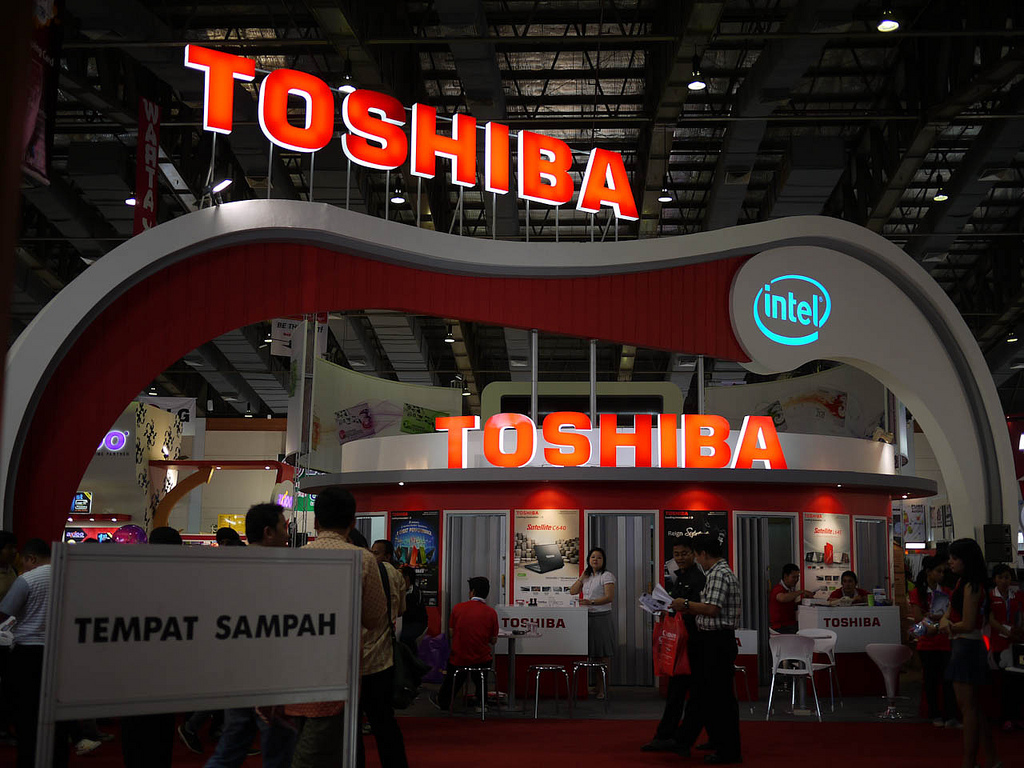The IPO is one of the various spare options considered by top managers of Toshiba, writes FT referring to sources familiar with the situation. According to the publication, some analysts and shareholders of Toshiba prefer this plan to the existing deal.
In September, the Japanese corporation agreed on the sale of Toshiba Memory, the world's second largest chip manufacturer NAND, to a consortium led by the investment fund Bain Capital.
The corporation put this business on sale amid growing losses of Westinghouse Electric Co LLC, the American division of Toshiba, which is engaged in nuclear power, now bankrupt.
However, the pressure on the conglomerate weakened after it raised 600 billion yen ($ 5.4 billion) by issuing new shares that were sold to foreign funds at the end of last year. This and the write-off of taxes gave Toshiba enough money to cover its obligations.
If the agreed sale of Toshiba Memory does not receive regulatory approval before March 31, Toshiba has the right to refuse the deal, sources familiar with the situation told Reuters.
Hong Kong investor-activist Argyle Street Management Ltd, a hedge fund with assets under management for $ 1.2 billion, opposed the sale, saying it was no longer needed and that the board of directors should consider the possibility of an IPO instead.
Operating profit of Toshiba in the first financial half-year jumped 76% due to high indicators of the semiconductor division, which the Japanese conglomerate sells for $ 18 billion. However, in the first half of 2017-2018 fiscal year (ended September 30), the company received a net loss of 49.785 billion yen $ 437.6 million) against profit a year earlier.
In the second quarter of the current fiscal year, Toshiba's operating profit reached 135.1 billion yen ($ 1.2 billion), up from 76.9 billion yen a year earlier. Analysts surveyed by Thomson Reuters expected revenue of 124.47 billion yen.
The revenue of Toshiba increased by 2% to 1.24 trillion yen ($ 11 billion), which contributed to a 20% rise in sales in the division of Storage & Electronic Devices Solutions.
Following the results of the second fiscal quarter, Toshiba received a net loss of 100.1 billion yen ($ 879.8 million) against profit of 35.5 billion yen ($ 351.5 million) last year. The loss per share was 23.65 yen ($ 0.2) against the base profit of 8.39 yen ($ 0.08) a year earlier. Operating income rose 1.8 times year-on-year to 135.1 billion yen ($ 1.2 billion). Revenue from sales increased by 2.3% to 1.243 trillion yen ($ 10.9 billion).
The company announced an increase in capital expenditure in the semiconductor business from the previous 400 billion yen to the current 600 billion yen ($ 5.3 billion). Growing investments are due to the construction of a new production line in a joint venture with Western Digital.
source: reuters.com, ft.com
In September, the Japanese corporation agreed on the sale of Toshiba Memory, the world's second largest chip manufacturer NAND, to a consortium led by the investment fund Bain Capital.
The corporation put this business on sale amid growing losses of Westinghouse Electric Co LLC, the American division of Toshiba, which is engaged in nuclear power, now bankrupt.
However, the pressure on the conglomerate weakened after it raised 600 billion yen ($ 5.4 billion) by issuing new shares that were sold to foreign funds at the end of last year. This and the write-off of taxes gave Toshiba enough money to cover its obligations.
If the agreed sale of Toshiba Memory does not receive regulatory approval before March 31, Toshiba has the right to refuse the deal, sources familiar with the situation told Reuters.
Hong Kong investor-activist Argyle Street Management Ltd, a hedge fund with assets under management for $ 1.2 billion, opposed the sale, saying it was no longer needed and that the board of directors should consider the possibility of an IPO instead.
Operating profit of Toshiba in the first financial half-year jumped 76% due to high indicators of the semiconductor division, which the Japanese conglomerate sells for $ 18 billion. However, in the first half of 2017-2018 fiscal year (ended September 30), the company received a net loss of 49.785 billion yen $ 437.6 million) against profit a year earlier.
In the second quarter of the current fiscal year, Toshiba's operating profit reached 135.1 billion yen ($ 1.2 billion), up from 76.9 billion yen a year earlier. Analysts surveyed by Thomson Reuters expected revenue of 124.47 billion yen.
The revenue of Toshiba increased by 2% to 1.24 trillion yen ($ 11 billion), which contributed to a 20% rise in sales in the division of Storage & Electronic Devices Solutions.
Following the results of the second fiscal quarter, Toshiba received a net loss of 100.1 billion yen ($ 879.8 million) against profit of 35.5 billion yen ($ 351.5 million) last year. The loss per share was 23.65 yen ($ 0.2) against the base profit of 8.39 yen ($ 0.08) a year earlier. Operating income rose 1.8 times year-on-year to 135.1 billion yen ($ 1.2 billion). Revenue from sales increased by 2.3% to 1.243 trillion yen ($ 10.9 billion).
The company announced an increase in capital expenditure in the semiconductor business from the previous 400 billion yen to the current 600 billion yen ($ 5.3 billion). Growing investments are due to the construction of a new production line in a joint venture with Western Digital.
source: reuters.com, ft.com





